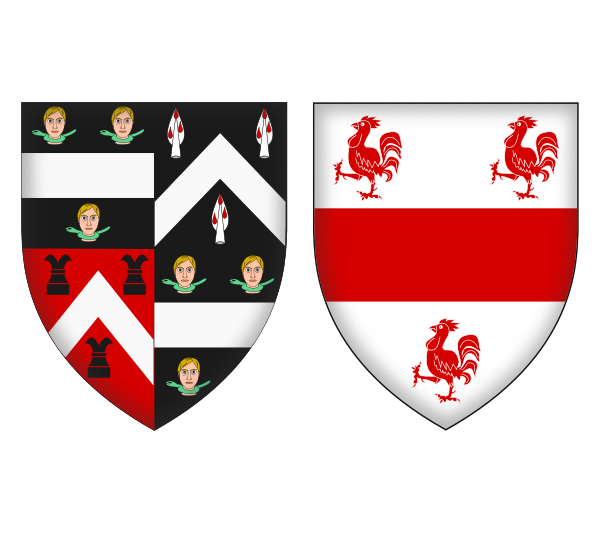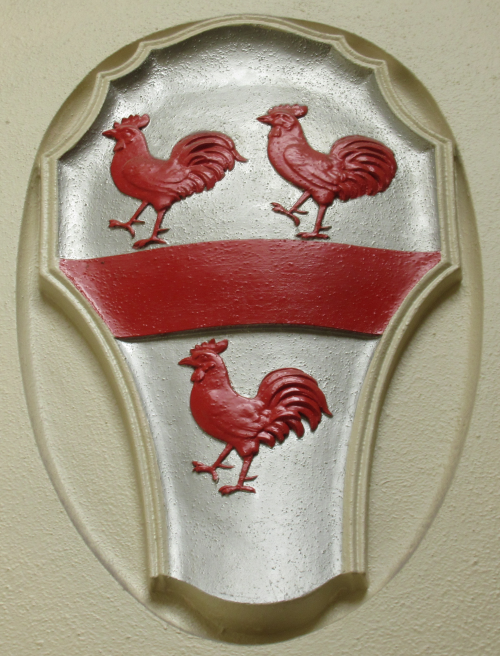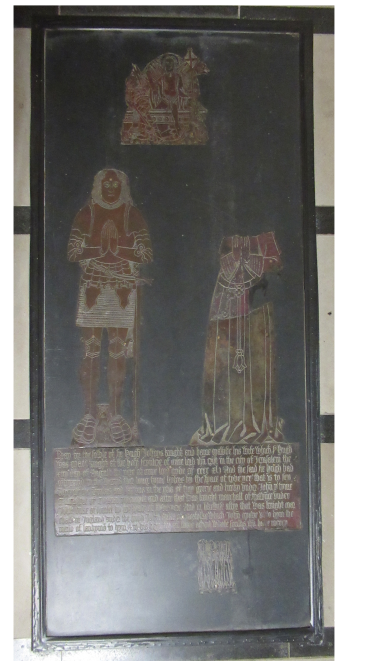 |
BlazonShield 1: 1 & 4, Sable a fess Argent between three boys' heads couped at the neck, a snake about each one's neck. 2, Sable, a chevron between three spear-heads Argent embrued Gules. 3, Gules, a chevron Argent between three chess-rooks Sable.. Shield 2: Argent, a fess between three cocks Gules. |
Sir Hugh Johnys served as a soldier in various capacities in the 15th century. According to his monumental brass in St.Mary's Church, Swansea, he served under John, emperor of Constantinople (i.e. John VIII Palaiologos, Byzantine Emperor 1425-48) against the Turks between 1436 and 1441, and was knighted at the Holy Sepulchre in Jerusalem on 14 August 1441. He went on to becomeknight marshal of France and later of England. He was granted the manor of Landimôr by the Duke of Norfolk.
In c.1452 Sir Hugh sought the hand in marriage of Elizabeth Woodville but was unsuccessful. She went on to become Queen of England as wife of King Edward IV, while he married Maud Cradock, a cousin of Sir Matthew Cradock. They had a house in Fisher Street, Swansea, and were buried in St.Mary's Church, where there is still a monumental brass to them.
There is some uncertainty about Sir Hugh Johnys's arms. In his 1684 account of the Duke of Beaufort's progress through Glamorgan, Thomas Dinely identifies his arms as Argent, a fess between three cocks Gules, but it is likely that the correct arms are those of his Vaughan ancestors. Apparently both had been on display in the church and Dinely might had confused the two.
All four quarters make reference to the arms of Welsh ancestors. The first quarter is a variant of the arms of Moreiddig Warwyn of Brycheiniog, a descendant of rulers of Brycheiniog. The second is the arms of Bleddyn ap Maenyrch, another ruler of Breycheiniog, and the third are one of the coats attributed to Hywel Melyn.
 |
| One version of Johnys's arms in Swansea Guildhall. |
 |
| Johnys's monumental brass in St.Mary's Church, damaged during the Blitz in 1941. |